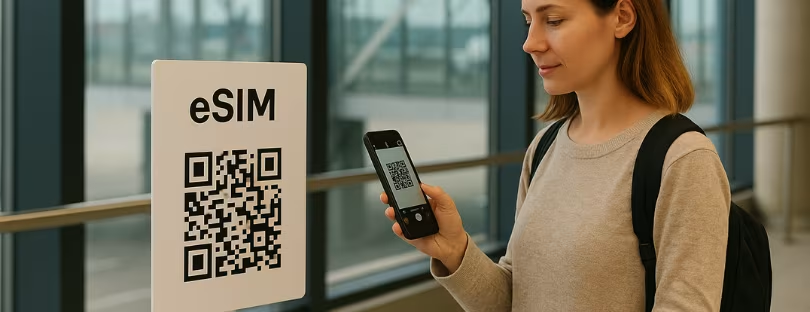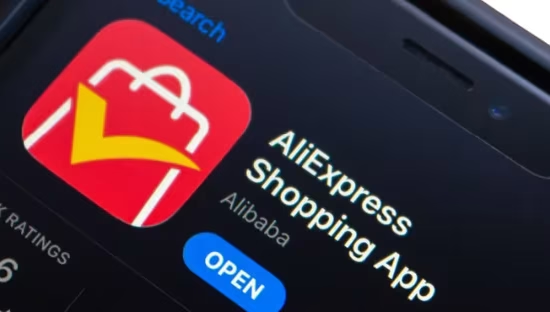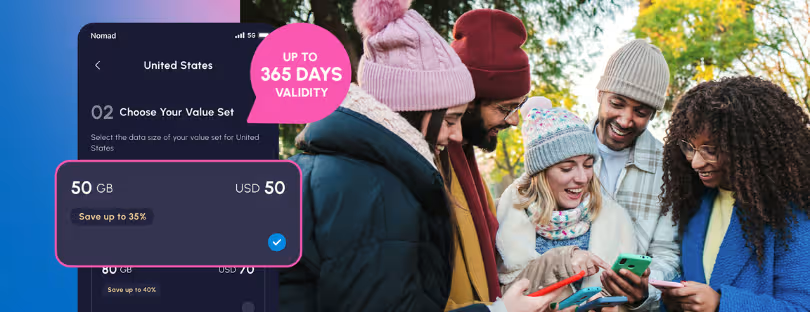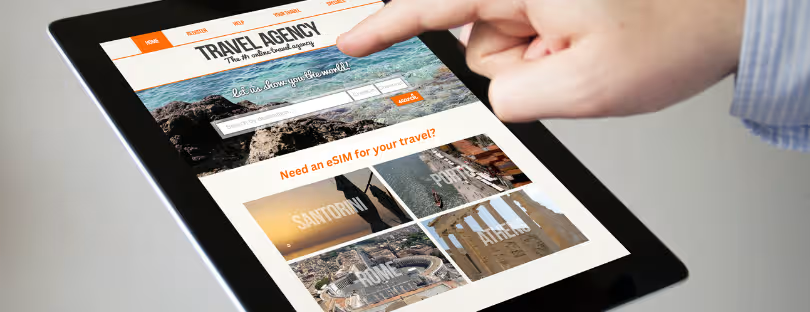
Is Your Network Ready for Inbound eSIM Demand?
If you’re in telecom, travel tech, or even just dabbling in connectivity, you’ve probably noticed three little letters making a lot of noise lately: eSIM. It’s not just a buzzword anymore—it’s the new baseline of mobile connectivity.
Travelers are buying eSIMs before they even land. Businesses are building mobility programs around them. And destinations are starting to include eSIM as part of their digital-first tourism experience. In other words, eSIM isn’t coming—it’s already here.
But here’s the real question: is your network ready for inbound eSIM demand?
Because this shift isn’t just about offering a digital version of the plastic SIM card—it’s about being prepared for a completely new way of connecting people, devices, and services.
Let’s unpack what readiness really means, both technically and strategically.
The Inbound eSIM Shift
Traditionally, inbound roaming worked like this: a traveler lands in your country, their phone latches onto your network, and roaming charges get settled between operators. Simple for operators, painful for travelers.
Now flip the script. With eSIM, that same traveler can land in your country having already bought a local data plan from an app. They scan a QR code, the phone’s Local Profile Assistant (LPA) downloads the profile from your SM-DP+ server (discovered via SM-DS in some cases), and boom—they’re connected to your network in seconds.
This means two things:
- Inbound demand is growing fast. Millions of travelers are pre-purchasing eSIMs before arrival.
- The entry point has shifted. It’s no longer about your stores or SIM kiosks—it’s about whether aggregators, eSIM marketplaces, and travel apps can connect through your digital infrastructure.
If you’re not part of that ecosystem, you’re invisible.
 Why Networks Can’t Ignore This
Why Networks Can’t Ignore This
Some operators still see eSIM as a threat to roaming revenue. But let’s be honest—that revenue was already under pressure. Consumers are actively looking for fairer, simpler options.
eSIM isn’t a threat—it’s the new front door.
- Tourism boards are starting to include eSIMs in visitor packages.
- Airlines and booking sites like Airalo × Gulf Air are bundling connectivity into loyalty programs.
- Destinations such as the UAE are offering free tourist eSIMs on arrival.
If your network isn’t ready to support these opportunities, you’re leaving serious value on the table—and letting more agile competitors capture it.
The Customer Expectation Gap
Travelers today aren’t comparing eSIM to traditional roaming anymore—they’re comparing how fast they can connect with you versus your competitors.
Imagine this:
- Traveler A lands, turns on their phone, and already has a working local plan.
- Traveler B has to queue at a kiosk, pay cash, and swap a SIM.
Which traveler walks away with a better impression of your market and your brand? Exactly.
Inbound eSIM readiness isn’t just a network issue—it’s a customer experience issue.
What “Ready” Really Means
Saying “we support eSIM” isn’t enough. True readiness means your network is optimized—technically, commercially, and operationally—for inbound eSIM traffic.
According to the GSMA SGP.22 consumer RSP standard, readiness includes having compliant provisioning systems (SM-DP+, SM-DS) in place, seamless activation, and traveler-friendly data plans.
Here’s what that looks like in practice:
1. Integration with Global Aggregators
Are you visible on eSIM marketplaces like Airalo, Airhub, Nomad, or aloSIM? That’s where travelers are shopping before they land. If you’re not listed there, your network may as well not exist to half the inbound market.
2. Flexible Commercial Models
Inbound eSIMs often rely on prepaid bundles or pay-as-you-go pricing rather than wholesale roaming. Your billing stack must handle digital microtransactions from customers you may never meet in person.
3. Instant Activation
Travelers expect “tap and go” connectivity. Behind the scenes, your SM-DP+ securely delivers the profile, your SM-DS helps discover it, and the LPA on the device installs it instantly.
4. Localized, Sensible Plans
A 7-day / 5 GB plan for €10 sells itself to tourists. A €30 plan they don’t need? Not so much. Use traveler data to build plans that make sense for short-stay users.
5. Partnership Ecosystem
Are you working with airlines, OTAs, or tourism boards? These are the new distribution partners. The UAE’s free tourist eSIM initiative proves how first-touch connectivity can boost an entire destination’s image.
The Business Case
Why should you care about inbound eSIM demand?
- Revenue diversification: Fewer roaming surcharges, more scalable prepaid sales.
- Brand exposure: A great eSIM experience abroad can convert inbound users into long-term fans.
- Efficiency: Digital provisioning slashes logistics and SIM manufacturing costs.
- Data insights: eSIM usage data reveals real traveler patterns you can act on instantly.
In short, eSIM isn’t about protecting yesterday’s margins—it’s about owning tomorrow’s growth channels.
The Risks of Standing Still
If you’re not ready for inbound eSIMs, you risk:
- Being invisible: Travelers can’t buy what they can’t see.
- Losing ground to MVNOs: Agile digital brands and marketplaces are already filling the gap.
- Damaging perception: If your country or network is seen as “hard to connect,” it affects tourism and reputation.
Customer behavior is shifting fast. Once travelers go digital-first, they rarely go back.
Getting Started (Without Overcomplicating It)
You don’t need a moonshot project to join the game. Start small, move fast:
- Audit your eSIM offer. Do you have inbound-friendly plans? Are they visible globally?
- Talk to aggregators. Open integration discussions today.
- Test traveler bundles. Pilot short-term plans through digital channels.
- Partner locally. Align with airports, airlines, and tourism boards.
- Market the experience. Show travelers how easy it is to connect—not just that you offer eSIM.
Speed beats perfection. Early adopters will capture the inbound traveler mindshare long before others even react.
Looking Ahead
Inbound eSIM demand will only accelerate. Apple went eSIM-only in the U.S. with the iPhone 14, expanded that to more countries with the iPhone 17, and Google’s Pixel 10 is eSIM-only in the U.S. too.
Between device makers going all-digital and destinations simplifying tourist connectivity, the shift is permanent. The question isn’t if inbound eSIM demand will transform your network—it’s whether you’re ready to catch the wave.
Final Thoughts
Inbound eSIM demand is rewriting how networks engage with travelers. It’s not a threat to defend against—it’s a gateway to relevance in the next decade of mobile.
If your network leans in—integrating with aggregators, simplifying activation, and shaping real traveler-friendly plans—you’re not just keeping up. You’re becoming the preferred local connection for millions of global visitors who simply want one thing: seamless, affordable, instant connectivity.
So ask yourself: is your network ready?
Because the travelers already are.











